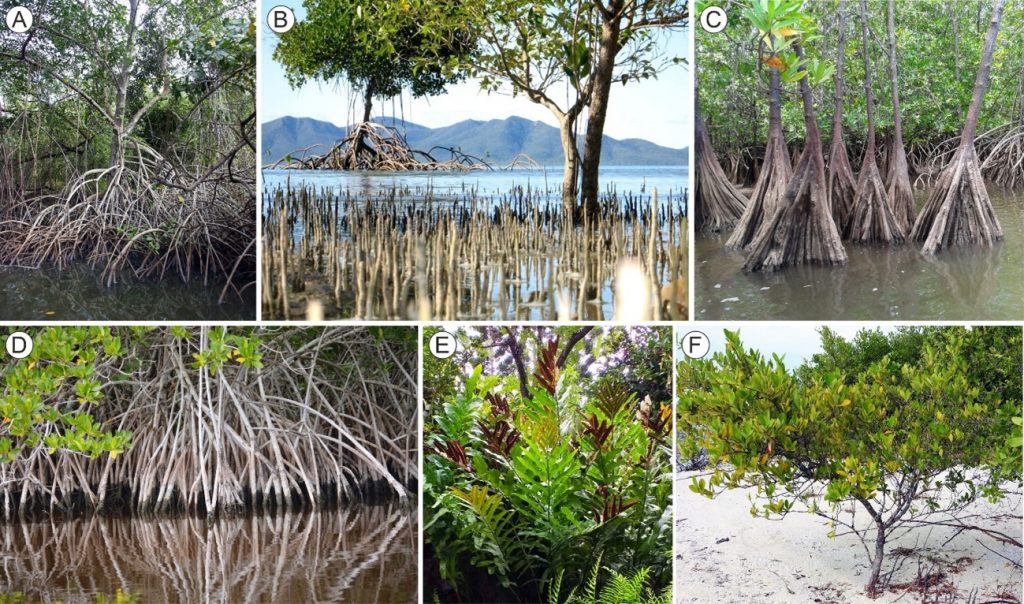Origin and Evolution of Caribbean Mangroves
Mangroves are forested ecosystems living on intertidal coastal wetlands all over the tropics and subtropics, roughly between the parallels 25ºN and 25ºS. These communities are typically organized around a few dominant tree species, the mangrove-forming trees, and are transitional land-sea ecosystems that play a fundamental role in the maintenance of terrestrial and marine biodiversity and in major biogeochemical cycles, notably the carbon cycle, for which mangroves are relevant sinks.

At present, mangroves have a global extent of nearly 140,000 km2 with the highest proportion in Asia (38%) followed by Latin America and the Caribbean (20%), Africa (20%), Oceania (12%) and North America (8%). During the last four decades, mangroves have experienced a 25-30% reduction in their total extent due to anthropogenic pressure and are one of the World’s most threatened ecosystems. It has been estimated that, under current conditions, mangroves could disappear within the next century.
Knowing when and how mangroves originated and evolved under the action of natural (climatic, eustatic) and anthropogenic drivers is important not only to understand the present status of the ecosystems but also to inform their conservation, in the face of direct (deforestation) and indirect (global change) anthropogenic stresses. This year, I have initiated a biogeographical, ecological and evolutionary study on the history of the Caribbean mangroves from their Eocene origin (ca. 45 Ma) to their Quaternary (the last 2.6 Ma) reorganizations, under the action of Pleistocene glacial-interglacial cycles, followed by the Holocene (the last 11.7 ka) human disturbance.

This thorough review will be published in a series of four papers and a book. The first paper about the Eocene origin has already been published in the journal Earth-Science Reviews [1] and the second, which deals with the Eocene/Oligocene revolution of mangroves [2], has been submitted to the same journal. Two more papers, one on the Miocene to present diversification and another on the Pleistocene-Holocene reorganization are currently in writing. The book proposal will be submitted to Springer Nature, where I have recently published a couple of books on other subjects, such as Neotropical diversification [3] and the prehistory of Easter Island [4].
More information:
- Rull, V. 2022. The Caribbean mangroves: an Eocene innovation with no Cretaceous precursors. Earth-Science Reviews 231, 104070.
- Rull, V. 2022. Eocene/Oligocene global disruption and the revolution of Caribbean mangroves. Submitted to Earth-Science Reviews. Preprint available at EarthArXiv. doi 10.31233/X5835T.
- Rull, V. & Carnaval, A.C. 2020. Neotropical Diversification. Patterns and Processes. Springer Nature, Cham.
- Rull, V. & Stevenson, C.M. 2022. The Prehistory of Rapa Nui (Easter Island). Toward an Interdisciplinary Integrative Framework. Springer Nature, Cham.














